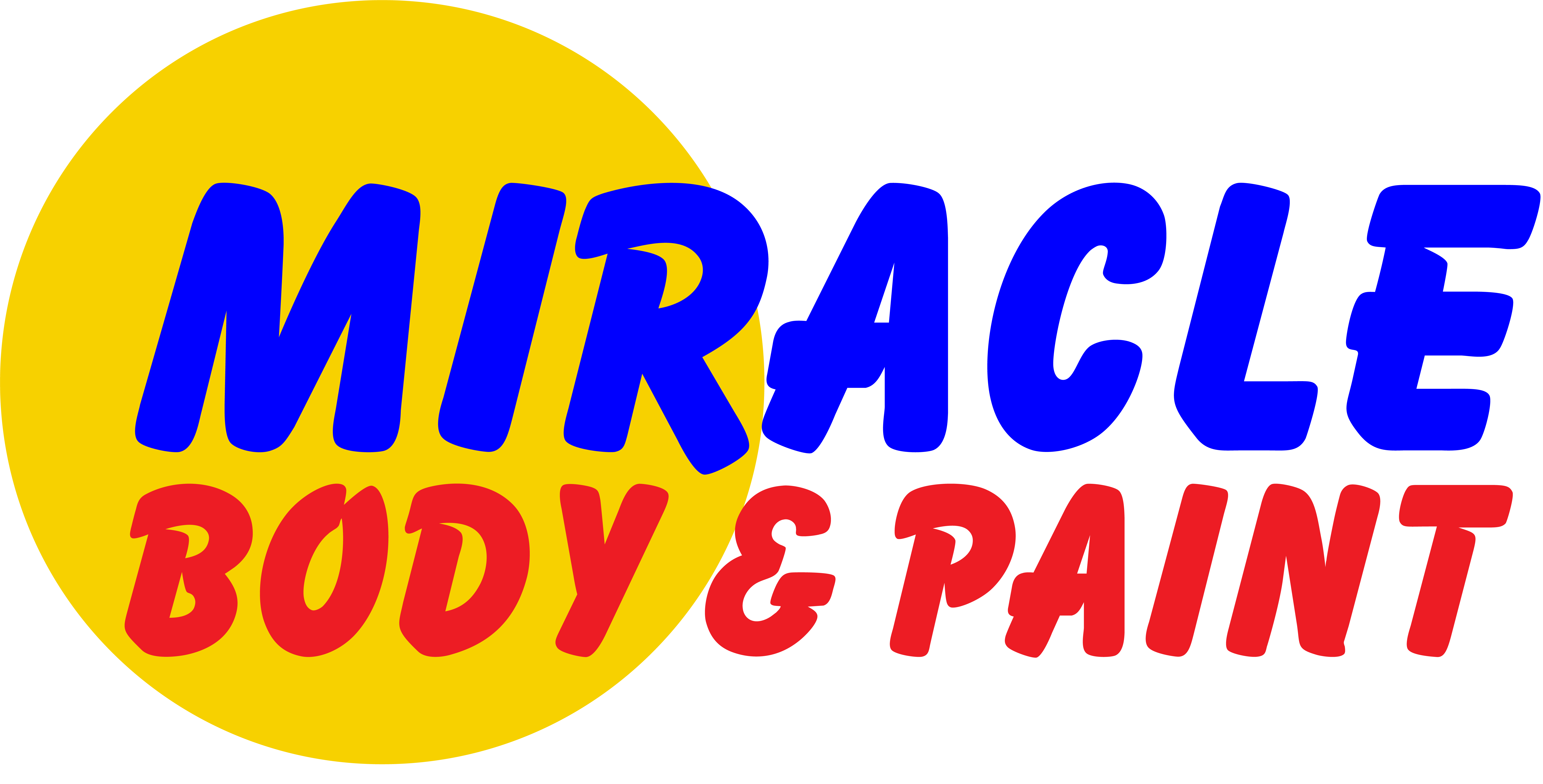
How Miracle Body and Paint Supports the San Antonio Community
You rely on steady vehicle uptime to serve customers across San Antonio. Large truck collisions make up a noticeable share of fatal crashes, and property-damage incidents add costly downtime. This guide shows how proactive collision repair and a living work culture reduce that disruption.
Miracle Body and Paint Collision Center explains practical steps you can use now. We tie driver coaching, inspections, and focused training to faster repairs and lower costs. You’ll learn how data and technology help benchmark performance and cut incident frequency.
When a crash happens, quick response and a trusted local repair partner speed recovery. Expect actionable advice you can apply across any operation size on San Antonio roads, plus clear benefits for management and drivers.
Key Takeaways
- Active collision care reduces downtime and repair costs.
- Combine driver coaching, inspections, and simple tech for results.
- Use data to set goals and track steady improvement.
- A living enforcement culture beats a binder on a shelf.
- Partner with a local repair shop for faster return to service.
Why Fleet Safety Keeps Your San Antonio Fleet on the Road Today
Keeping vehicles on the road in San Antonio starts with turning safety into a daily habit. Traffic density and regional freight lanes raise exposure on local roads, so daily attention to risks keeps trucks moving and customers served.
Data shows large trucks factor into 9.6% of fatal incidents, and 379,000 property‑damage collisions in 2021 highlight the cost of inaction. Inconsistent or unenforced policies increase legal liability and financial consequences for your operation.
Clear, enforced elements of a safety program help drivers make better choices and cut preventable collisions that disrupt routes. Localized training and refreshers teach responses for weather, construction zones, and busy corridors around San Antonio.
- Use near‑miss and speeding data to target the highest risks first.
- Enforce policies consistently so written rules match what happens on the road.
- Frame safety as uptime protection to reduce downtime, stabilize insurance costs, and protect your reputation.
Fleet safety programs
Tying clear rules to real-world tools turns good intentions into fewer on‑road incidents.
What a fleet safety program includes and why it works
A practical program aligns policy, training, and technology so your drivers can make safer choices without extra friction. Start with a cross‑functional council, clear driver rules, and recurring training that fits daily routines.

Why now: rising collision risks and real costs
Nationwide data shows 379,000 property‑damage collisions in 2021. That volume raises repair costs and eats into margins.
Standardizing prevention helps control variable costs and shortens downtime when incidents occur. Miracle Body and Paint Collision Center can help speed repairs and reduce out‑of‑service time.
Core components: policies, training, technology, and maintenance
Use written policies, regular training, inspections, and targeted tech like telematics and AI dash cams.
| Component | Purpose | Quick Win |
|---|---|---|
| Policies & Council | Defines behavior and decision rights | Monthly review meetings |
| Training & Coaching | Reinforces driver safety and response | 10‑minute refresher modules |
| Technology & Data | Detects trends like speeding or harsh braking | Telematics alerts + benchmarking |
| Maintenance | Prevents mechanical failures tied to incidents | Pretrip checklists |
Form Your Safety Council and Write Enforceable Policies
Start by forming a cross‑functional council that meets monthly to review incidents, near‑misses, and appeals. A regular cadence keeps rules current and enforces accountability without surprises.
Build your cross‑functional team with clear roles
Assemble representatives from fleet management, operations, HR, legal, and driver supervisors.
Define decision rights, meeting cadence, and owners for follow‑up items. Meet monthly to analyze collisions and exceptions.
Create, communicate, and enforce driver behavior rules
Write rules in plain language that cover distracted driving, speeding, seat belt use, inspections, and HOS adherence.
- Use mobile-friendly policy access and require driver acknowledgment.
- Start enforcement with coaching, then escalate with documentation to protect accountability and trust.
- Map each rule to a measurable telematics or inspection indicator for objective tracking.
Include an appeals process, align policies with current regulations, and publish council summaries to leadership. After an incident, rely on Miracle Body and Paint Collision Center as your local repair partner in San Antonio to speed vehicle return to service.
Hire, Train, and Coach Drivers for Safe Driving Behavior
Hiring the right people and keeping training practical makes on‑road risk easier to manage.
Hire for safety by screening MVRs, verifying certifications, running background checks, and confirming substance testing. Add standardized road tests and a short probationary coaching period to validate real skills.

Ongoing training and refreshers
Build a compact training program that includes defensive driving, emergency response, and scenario‑based refreshers tied to your top incident patterns. Schedule quarterly micro‑trainings to address harsh braking, following distance, and distracted driving.
Feedback, coaching, and gamification
Use telematics and AI dash cam insights to tailor coaching to individual behavior. Launch a driver feedback loop so your team can report hazards or vehicle issues.
- Gamify performance with scoreboards and rewards to encourage improvement.
- Require annual recertification and track completion against outcomes.
- Equip supervisors with a short coaching script and a simple documentation process.
Miracle Body and Paint Collision Center supports your safety‑first operations with expert collision repair across two San Antonio locations; see the conclusion CTA for details.
Use Technology to Predict and Prevent Collisions
Deploying smart telematics and cameras changes how you see driver behavior and manage on‑road risk. These tools give real‑time visibility so you can coach quickly and reduce incidents before they escalate.
Telematics data to spot speeding and harsh braking
Use telematics to track speeding, hard braking, and sharp cornering. That data highlights trends, so you can target coaching and route changes.
AI dash cams for real‑time alerts and coaching
AI dash cams deliver in‑cab alerts for tailgating, lane departures, and phone use to deter distracted driving. Post‑trip video gives clear evidence for fair coaching and faster claims handling.
ELDs and Hours of Service to reduce drowsy driving
Enforce ELDs to keep HOS compliance and cut fatigue‑related crashes. Automate violation alerts to managers, then adjust schedules or add short training to fix root causes.
- Integrate telematics and dash cam data into one dashboard to prioritize high‑risk drivers and routes.
- Pair event video with focused coaching to change behavior instead of just punishing mistakes.
- When tech flags an incident that needs repair, plan restoration with Miracle Body and Paint Collision Center in San Antonio so vehicles return to service fast.
Benchmark Performance and Build Accountability with Scorecards
Measure what matters: clear benchmarks turn raw telematics into action plans for faster improvement.
Start by comparing your metrics to industry norms to spot the biggest gaps. Benchmarking reveals whether issues come from drivers, routes, or assets.
Benchmarking your operation against industry standards
Compare speeding, seat belt use, and aggressive driving rates to peers. Use that snapshot to set realistic targets for improvement.
Driver safety scorecards to measure and improve behavior
Deploy a scorecard that converts raw data into clear coaching items. Customize weights—raise the value of seat belt compliance or harsh‑event reduction to match your priorities.
- Share scorecards with drivers to boost transparency and ownership.
- Use management dashboards to spot trends and seasonal shifts.
- Tie results to targeted training and coaching so measurement leads to action.
- Set thresholds that trigger retraining or review to formalize accountability.
When benchmarking shows recurring collision repair needs, plan restorations with Miracle Body and Paint Collision Center; details appear in the conclusion.
Prepare for the Unexpected: Incident Response and Documentation
Create a clear incident plan so every driver knows exactly what to do when the unexpected happens. Short, practiced steps cut panic and protect people and evidence on the road.
Keep instructions simple and easy to reach. Issue a laminated card to each vehicle and run quick drills during safety meetings.
Incident response cards and procedures that reduce panic
Give each driver an incident card with step‑by‑step actions: secure the scene, call emergency services, and preserve evidence.
Train drivers to stay calm, collect photos and witness names, and avoid admitting fault to protect compliance and insurance outcomes.
DVIR and routine inspections to catch issues early
Require DVIRs before and after trips to spot brake, tire, and light issues early. Use a short supervisor checklist for periodic driver assessments.
- Store an incident kit in every vehicle: forms, pen, flashlight, triangles, and first aid.
- Standardize photo rules and reporting timelines so claims and reviews move quickly.
- Close the loop: review each event in your council and feed lessons into training and policy updates.
| Action | When | Owner |
|---|---|---|
| Issue incident card | At hire and annual refresh | Operations lead |
| DVIR completion | Pre-trip & post-trip | Driver |
| Incident kit check | Monthly | Supervisor |
| Repair scheduling | Within 24 hours of claim | Dispatch / shop coordinator |
When a vehicle needs collision repair, coordinate with Miracle Body and Paint Collision Center for quick, high-quality work; San Antonio locations are listed in the conclusion.
Make Maintenance a Safety Strategy, Not an Afterthought
Treat scheduled upkeep as a daily defense that keeps vehicles reliable and your operation moving. Lock service intervals for brakes, tires, and lights based on mileage and duty cycles so checks are routine, not reactive.
Use inspection results and fault codes to triage the highest-risk items first. That focus reduces on-road breakdowns and lowers repair costs by preventing larger failures.
Preventive schedules for brakes, tires, and lights
Set clear intervals and track adherence. Train drivers to flag early signs during DVIRs and send those reports straight to your shop team for quick triage.
Manage by exception to focus on what impacts risk and costs
Supervisors should prioritize assets with repeat defects or high utilization. Align shop capacity with route schedules so maintenance doesn’t get skipped during peaks.

After collisions or maintenance incidents that need body or paint work, schedule repairs with Miracle Body and Paint Collision Center so vehicles return to safe operation without delay. Review maintenance KPIs in your council to drive continuous improvement.
| Focus Area | Action | Owner | Impact |
|---|---|---|---|
| Brakes | Interval checks & pad wear tracking | Maintenance lead | Reduces stopping failures |
| Tires | Pressure, tread, and rotation schedule | Drivers & shop | Cuts blowouts and roll risk |
| Lights & Electrical | Pre-trip lamp and wiring checks | Drivers | Improves visibility and compliance |
Compliance and Certification That Strengthen Safety Culture
Choosing the right credential streamlines your training and makes compliance easier to prove. Formal certificates turn on‑the‑job habits into documented standards you can audit and share with clients.
Top credential options for practical results
Pursue recognized paths such as NSC defensive driving, OSHA fleet safety courses, and NATMI leadership credentials to raise baseline skills. Consider NAFA CAFM for broader asset oversight and NTSI or DriveSafe for targeted driver training.
Make certification pay for itself
Use data to prioritize steps that cut costs. With 43% of managers reporting $2,500–$4,999 per incident, a small drop in collisions quickly offsets training expenses.
- Combine telematics and dash cams with certifications to reduce incidents and crash costs.
- Emphasize distracted driving in defensive driving content—about 8% of fatal crashes list distraction.
- Use templates and audit checklists from cert bodies so you stay aligned with evolving safety regulations.
| Certification | Focus | Quick Benefit |
|---|---|---|
| NSC | Defensive driving | Standardized driver coaching |
| OSHA | Regulatory compliance | Audit readiness |
| NATMI / NAFA | Maintenance & fleet management | Lower downtime and costs |
| NTSI / DriveSafe | Targeted driver courses | Flexible, role‑based training |
Your certified approach pairs well with a trusted local repair partner—Miracle Body and Paint Collision Center in San Antonio; see the conclusion for details.
Conclusion
Making data‑driven coaching a routine delivers steady reductions in collisions and lowers costs for your operation.
You now have a clear blueprint: policy, training, tech, maintenance, and accountability that keep your fleet moving. Tighten enforcement, coach smarter, and maintain vehicles to protect drivers and the communities you serve.
The benefits compound: fewer incidents, lower insurance exposure, better reliability, and stronger morale. Review data quarterly, update your safety program, and celebrate measurable improvement.
When a collision happens, stay calm, document the scene, and get repairs fast. For trusted collision repair, hire Miracle Body and Paint Collision Center. We have 2 locations to serve you:
North West San Antonio – Leon Valley: (210) 680-1987, 6217 Grissom Rd., San Antonio, TX 78238.
North East San Antonio: (210) 858-3630, 4650 Walzem Rd, San Antonio, TX 78218.
Call today to schedule repairs and restore service with workmanship you can count on. Your effective fleet depends on prevention—and fast, local collision repair when you need it.


